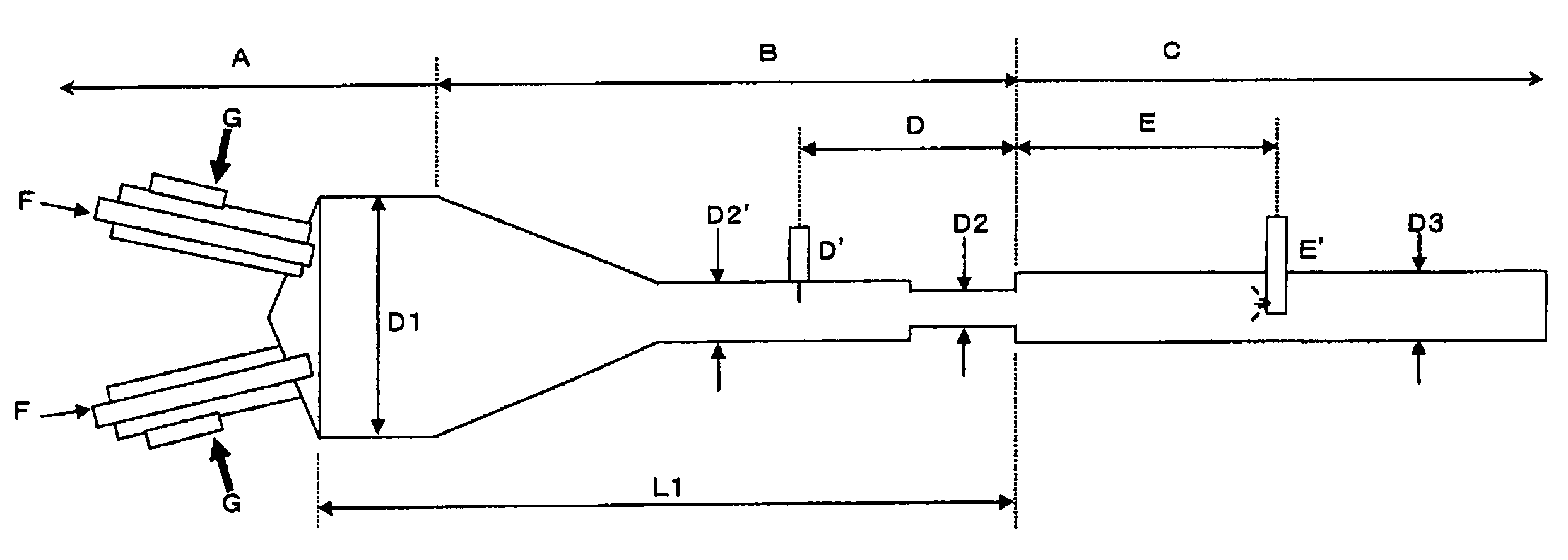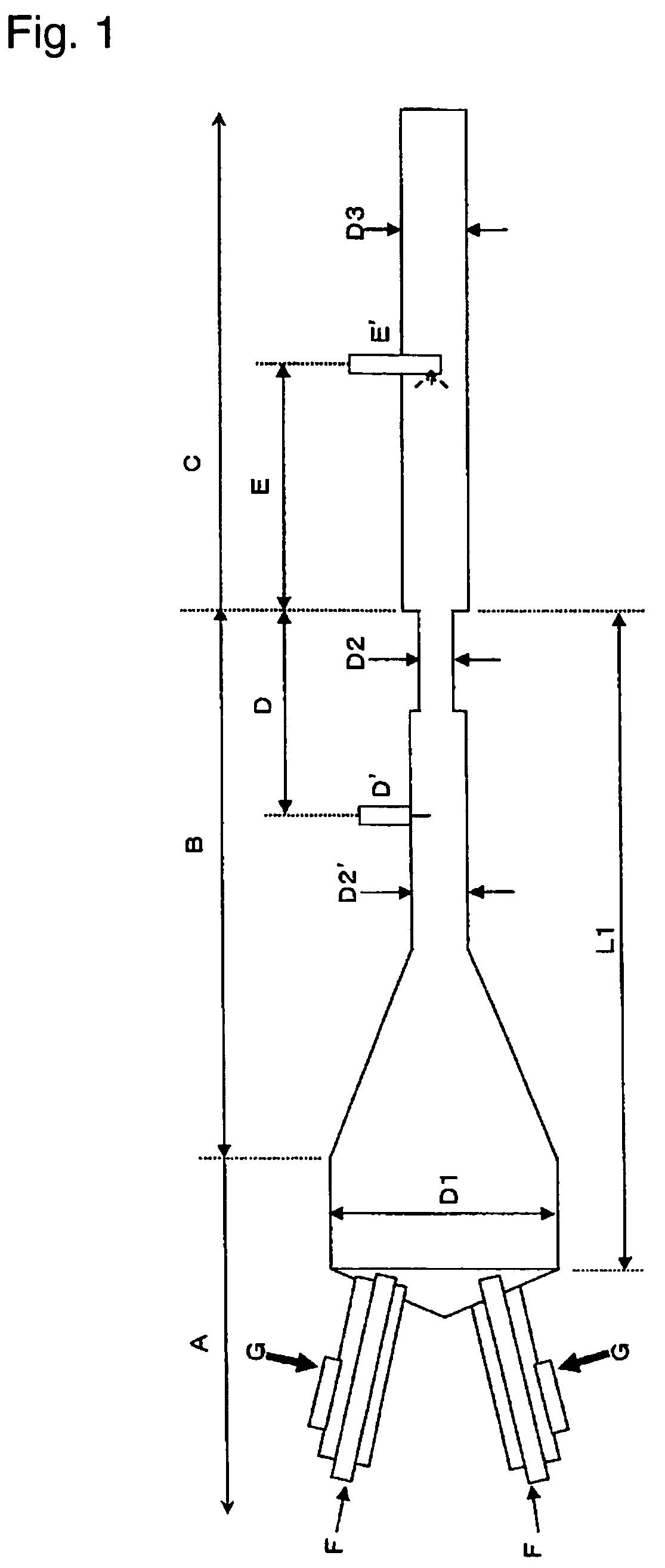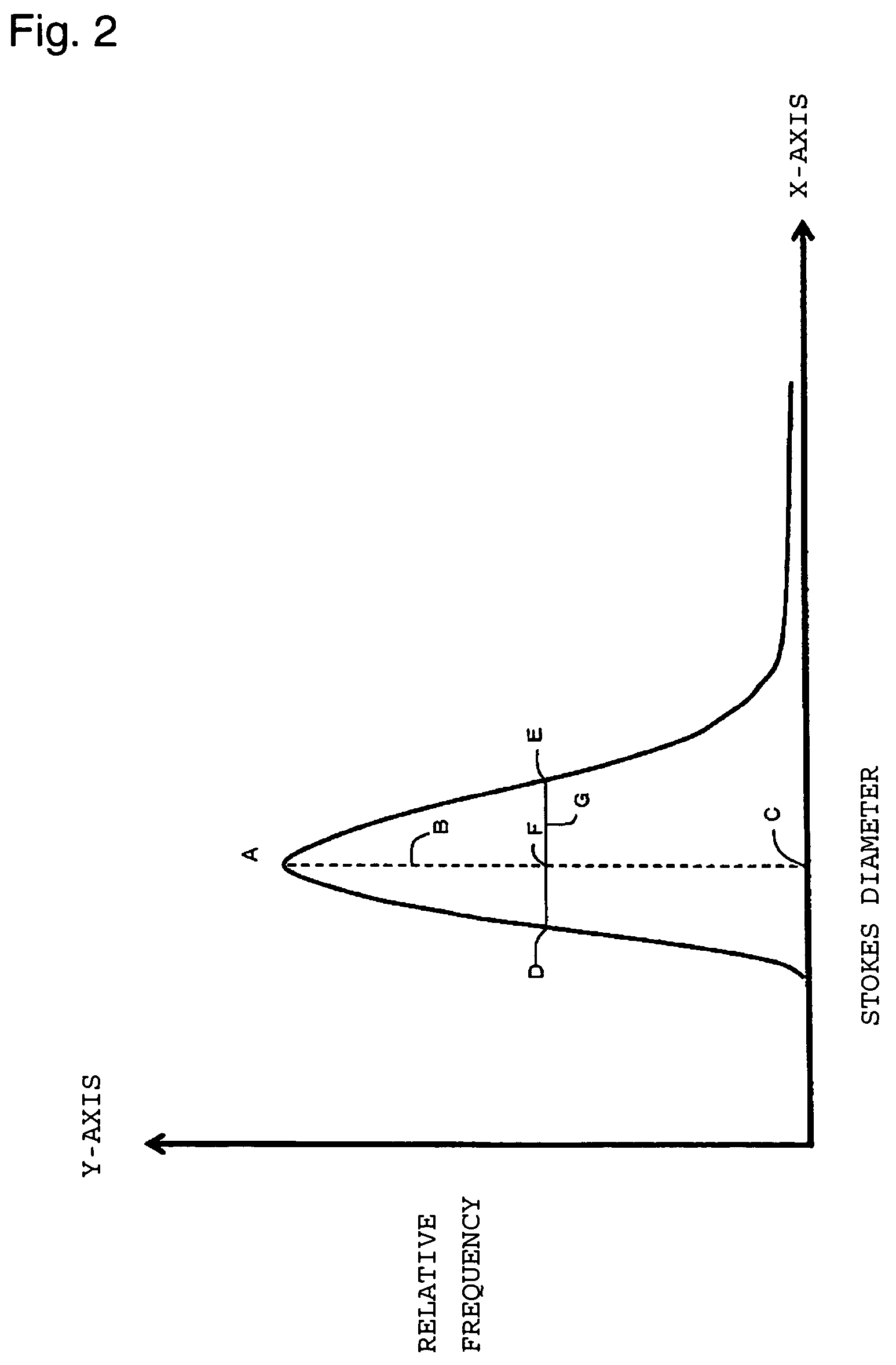Propylene resin composition and molding thereof
a technology of propylene resin and composition, which is applied in the direction of transportation and packaging, special tyres, chemistry apparatuses and processes, etc., can solve the problems of inefficiency, poor moldability and productivity, and high cost, and achieve good moldability and productivity. , excellent in the balance of electroconductivity
- Summary
- Abstract
- Description
- Claims
- Application Information
AI Technical Summary
Benefits of technology
Problems solved by technology
Method used
Image
Examples
preparation example 1
PP-1
(i) Preparation of Ziegler Catalyst
[0133]Into a reactor having an internal capacity of 10 L and thoroughly flushed with nitrogen, 4,000 ml of n-heptane dehydrated and deoxidized, was introduced, and then, 8 mol of MgCl2 and 16 mol of Ti(O-n-C4H9)4 were introduced, followed by a reaction at 95° C. for 2 hours. After completion of the reaction, the temperature was lowered to 40° C., and 960 ml of methylhydropolysiloxane (one with 20 centistokes) was introduced and reacted for 3 hours. The formed solid component washed with n-heptane. Then, into a reactor having an internal capacity of 10 L and thoroughly flushed with nitrogen, 1,000 ml of n-heptane purified in the same manner as above, was introduced, and then the solid component prepared as described above was introduced in an amount of 4.8 mol as calculated as Mg atom. Then, 8 ml of SiCl4 was mixed to 500 ml of n-heptane, and the mixture was introduced into a flask over 30 minutes at 30° C., followed by a reaction at 70° C. for ...
preparation example 2
PP-2
[0136]An ethylene / propylene block copolymer was obtained in the same manner as in Preparation Example 1 except that the amount of hydrogen in the first polymerization step was changed to 0.048 by a molar ratio of H2 / propylene, and the amount of hydrogen in the second polymerization step was changed to 0.015 by a molar ratio of H2 / propylene.
preparation example 3
PP-3
[0137]Using the solid catalyst component obtained in Preparation Example 1 and triethylaluminum and employing a fluidized bed gas phase reactor having a capacity of a reaction portion of 280 L as the first polymerization step, homopolymerization of propylene was continuously carried out under a condition of a polymerization temperature of 85° C. and a propylene partial pressure of 22 kg / cm2. At that time, the solid catalyst component was supplied continuously at a rate of 1.4 g / hr and triethylaluminum was continuously supplied at a rate of 6.5 g / hr. The powder withdrawn from the first polymerization step was continuously sent at a rate of 19.5 kg / hr to a fluidized bed gas phase reactor having a capacity of a reaction portion of 280 L used as the second polymerization step, whereby copolymerization of propylene and ethylene was continuously carried out. From the second polymerization step, a polymer was withdrawn continuously at a rate of 26 kg / hr. The hydrogen concentration in e...
PUM
| Property | Measurement | Unit |
|---|---|---|
| nitrogen absorption specific surface area | aaaaa | aaaaa |
| volume resistivity | aaaaa | aaaaa |
| volume resistivity | aaaaa | aaaaa |
Abstract
Description
Claims
Application Information
 Login to View More
Login to View More - R&D
- Intellectual Property
- Life Sciences
- Materials
- Tech Scout
- Unparalleled Data Quality
- Higher Quality Content
- 60% Fewer Hallucinations
Browse by: Latest US Patents, China's latest patents, Technical Efficacy Thesaurus, Application Domain, Technology Topic, Popular Technical Reports.
© 2025 PatSnap. All rights reserved.Legal|Privacy policy|Modern Slavery Act Transparency Statement|Sitemap|About US| Contact US: help@patsnap.com



